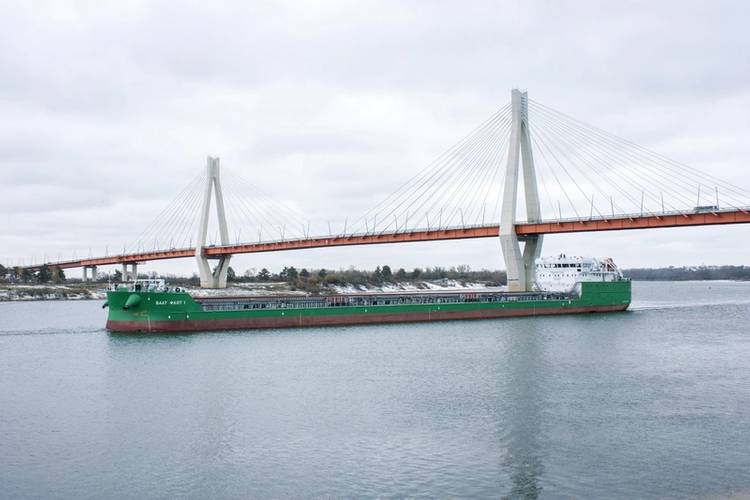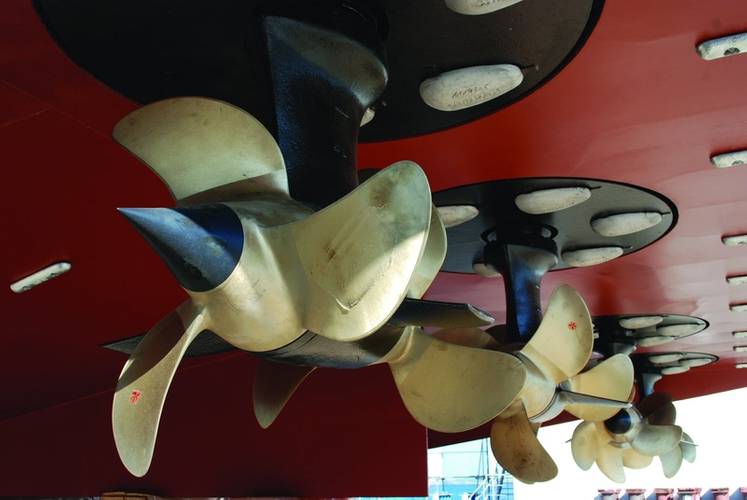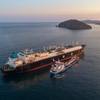SCHOTTEL to Present Inland Offerings
SCHOTTEL will present its expertise to the U.S. inland market at the upcoming Inland Marine Expo in St Louis, June 15-17, 2015: strong push boats in Brazil, big cargo vessels in Russia and comfortable river cruise vessels in Europe - recent projects prove the competence of German Rudderpropeller manufacturer SCHOTTEL on inland waterway propulsion.
Efficient Z-drives for inland waterways
The Paraguay-Paraná river system extends over 2,500 kilometers and is characterized by alterations of the rivers' flow, dams, sedimentation, forestry, silting and pollution which have great impact on a vessel’s propulsion system.
The push boats of Hidrovias do Brasil, a South American logistics specialist; operate in this demanding environment with heavily laden barges over long distances. These new generation vessels are equipped with three SCHOTTEL SRP 1215 (1,600 kW each) Rudderpropellers, driven by electric motors and designed to resist large and heavy floating debris. Additionally, SCHOTTEL equips 2 Hidrovias do Brasil push boats for the Amazon River. In this case the thrusters are driven directly by diesel engines. In both cases, the thrusters are modified especially for shallow draft operation with a flat bottom nozzle that is partially integrated into the vessels hull, increasing the available space for the propeller.
This nozzle concept reduces the draft of the vessel and thus reduces the danger of grounding and enables more clearance in shallow areas. Nozzle outfitted applications are very common on inland waterways since they not only increase the thrust up to 30-40 percent compared to open propeller applications, but also protect the propeller from flotsam.
Best maneuvering options at low fuel consumption
Even at slow speed the thrust of the 360° steerable Z-drives is higher than a conventional propeller plus rudder system, since the rudder needs a certain water flow before steering force is generated.
If the operation profile requires frequent steering corrections or maneuvers the fuel consumption of Z-drives is remarkably lower: The change of water flow direction generates an inhomogeneous flow and pressure in the propeller and rudder area of a conventional propeller system. This causes the engine to speed up to compensate the changing conditions. Z-drives instead always capture the optimum flow direction since they are 360° steerable.
Even brake forces are higher with Z-drive applications – turning the thruster 180° shortens the stopping distances effectively. This is an important requirement for Hidrovias, as the entire convoy can be stopped in less than 2.5 times the flotilla length when operating fully laden and at full speed.
Combined propulsion concepts for cargo loads
Various vessel concepts on inland waterways are outfitted with a propulsion concept that includes Z-drives and maneuvering aids. Transportation Assets Management, a major logistics provider on the Volga-Don Canal and the Volga Baltic Waterway, has equipped a large fleet of inland cargo vessels with two SCHOTTEL SRP 1012 (1200 kW each) Rudderpropellers and a SCHOTTEL STT 170 (230 kW) Transverse Thruster. With their length of 140.85 meters, breadth of 16.60 meters and a draft of 3.6 meters, the vessels offer a cargo capacity of 5586 metric tons of oil. Furthermore gravel, timber, coal or up to 320 cars may be transported.
Propulsion concepts also take into account the special requirements of passenger vessels. SCHOTTEL developed a widespread propulsion concept for European river cruise vessels, equipped with four Twin Propeller units. In comparison to a SCHOTTEL Rudderpropeller with a single propeller, the SCHOTTEL Twin Propeller operates efficiently with a reduced propeller diameter, minimizing also the draft of the vessel. This allows a spacious clearance between the propellers and the hull and results in a low structure-borne noise levels entering the vessel. Additionally, the smaller propeller diameter requires only minor tunneling of the ship’s stern. In contrast to high tunneled ships, these stern lines increase the overall propulsion efficiency significantly.
SCHOTTEL SPJ 82 RD Pump Jets serve as additional drives in the bow. These are characterized by their compact design and act as maneuvering aids while underway and in docking situations. Pump jets may also be used as main propulsion or take home devices - thus they ensure the redundancy of propulsion concepts and increase a vessel’s safety.















